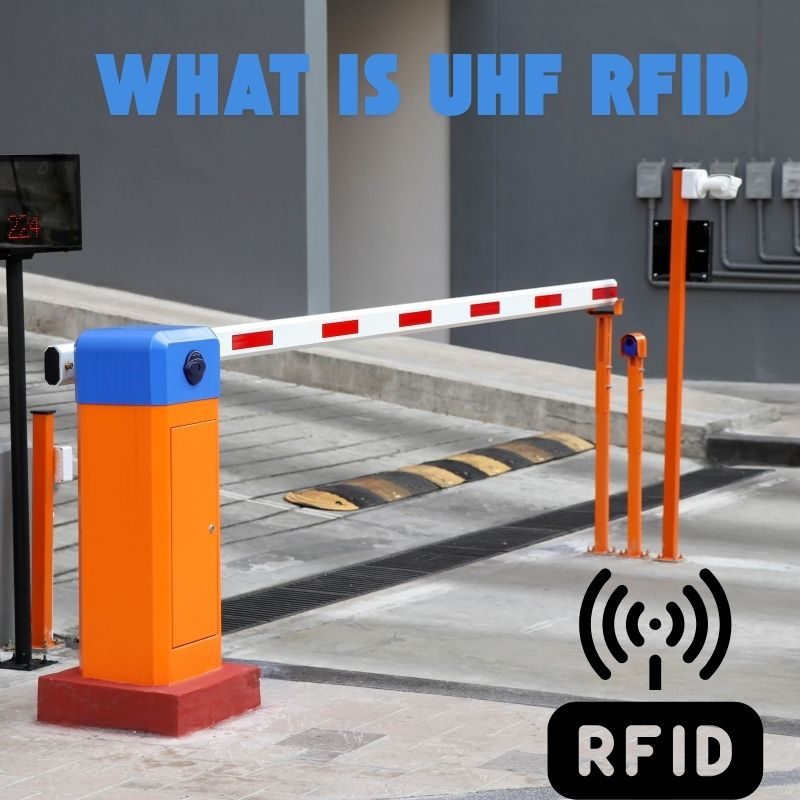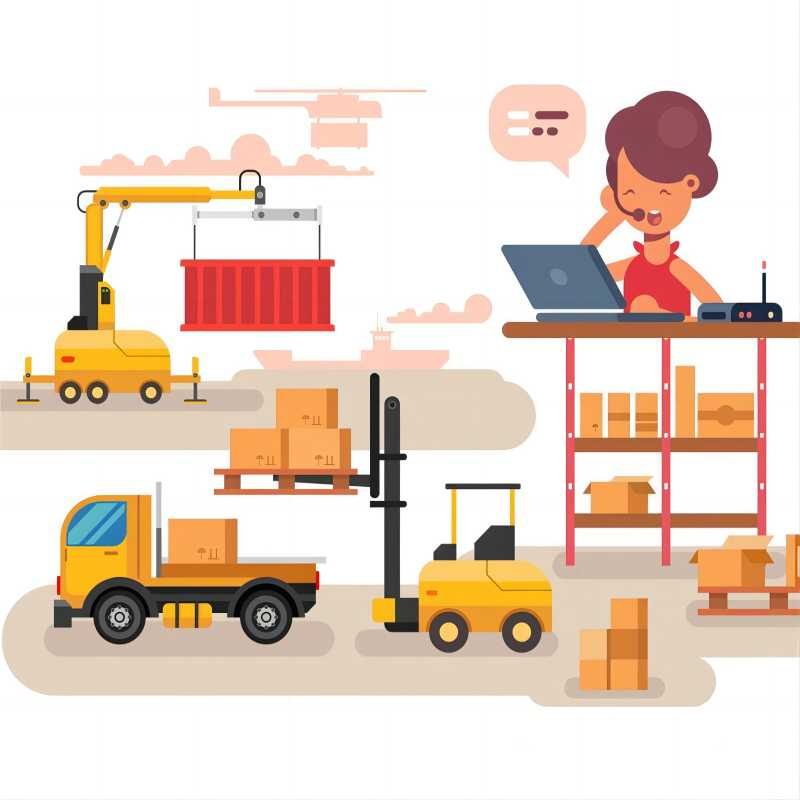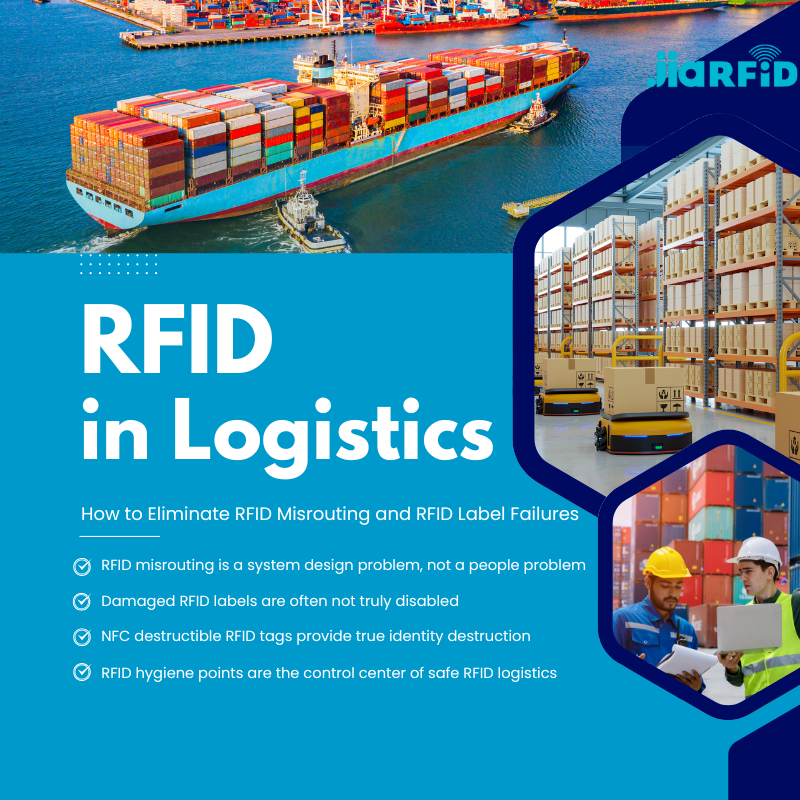
Kaj je UHF RFID?
Kazalo
Uvod
UHF RFID (Ultra-High Frequency Radio Frequency Identification) je najsodobnejša identifikacijska tehnologija, ki pridobiva na pomenu v različnih panogah. Od trgovine na drobno in logistike do zdravstva in kmetijstva, njena sposobnost omogočanja hitre, brezstične izmenjave podatkov spreminja način delovanja podjetij.
Ne glede na to, ali se s tehnologijo RFID spoznavate prvič ali želite poglobiti svoje znanje, vam bo ta vodnik pomagal razumeti, kaj UHF RFID je, kako deluje, njegove aplikacije in zakaj je to tehnologija, ki jo je treba poznati v letu 2025.

Kaj je UHF RFID?
UHF RFID, kratica za Ultra-High Frequency Radio Frequency Identification (identifikacija z radiofrekvenco ultravisoke frekvence), je brezžična komunikacijska tehnologija, ki uporablja radijske valove za identifikacijo in sledenje oznakam, pritrjenim na predmete. Je ena od treh glavnih frekvenčnih kategorij v tehnologiji RFID – drugi dve sta nizka frekvenca (LF) in visoka frekvenca (HF).
UHF običajno deluje v območju od 860 MHz do 960 MHz in je znan po:
- Večji domet branja (do 12 metrov ali več)
- Hitrejši prenos podatkov
- Zmogljivost branja večjih količin
Preprosteje povedano, UHF RFID je kot digitalni “črtna koda na steroidih” – ni potreben vidni stik, saj je mogoče takoj prebrati na stotine predmetov.
Kako deluje UHF RFID?
Da bi razumeli, kako deluje UHF RFID, si oglejmo njegove osnovne komponente:
- Oznake RFID: Vsebuje mikročip in anteno, ki shranjujeta podatke.
- Čitalniki RFID: oddaja radijske valove in sprejema podatke iz oznak.
- Antene: Okrepite signal med oznakami in čitalniki.
- Srednjeročna programska oprema/programska oprema: Obdeluje in upravlja zbrane podatke.
Obstajata dve glavni vrsti UHF RFID oznake:
- Pasivne UHF oznake: Zanašajte se na energijo iz signala bralnika; cenejša in pogosto uporabljena.
- Aktivne UHF oznake: Napaja se z baterijo; primeren za aplikacije z velikim dometom in v realnem času.
Ključne funkcije:
- Bralnik oddaja signal v UHF pasu.
- Oznaka prejme energijo, se vklopi in pošlje svoje podatke nazaj.
- Bralnik zbira te podatke in jih pošlje v backend sistem za obdelavo.
Sistem lahko bere več oznak hkrati, tudi pri visokih hitrostih, zaradi česar je UHF RFID idealna rešitev za dinamična okolja, kot so tekoči trakovi ali hitro gibljivo blago.
Prednosti tehnologije UHF RFID
Zakaj je UHF RFID tako priljubljen? Ker rešuje izzive sledenja in avtomatizacije v realnem svetu. Tukaj so njegove najpomembnejše prednosti:
- Dolgo območje branja: Do 12 metrov, tudi v zahtevnih okoljih
- Branje v večjih količinah: Preberite na stotine oznak v nekaj sekundah
- Stroškovno učinkovito: Pasivne oznake so cenovno dostopne za uporabo v velikem obsegu.
- Vidnost v realnem času: Takojšnje posodobitve zalog in gibanja sredstev
- Izven vidnega polja: Ni potrebe po neposrednem skeniranju, kot pri črtnih kodah.
- Skalabilnost: Primerno za majhna podjetja ali globalne dobavne verige
Skratka, povečuje učinkovitost, natančnost in avtomatizacijo – ključne stebre sodobnih podjetij.
Pogoste uporabe UHF RFID
UHF RFID se je uveljavil kot ključna tehnologija v sodobnih avtomatizacijskih in sledilnih sistemih, saj ponuja izjemen domet, hitrost in vsestranskost. Zaradi svoje sposobnosti, da hkrati bere na stotine oznak na velike razdalje, je neprecenljiv v številnih panogah.
Maloprodaja
- Nadzor zalog
- Sistemi proti kraji
- Avtomatizirano plačilo
- Posodobitve zalog v realnem času
Logistika in oskrbovalna veriga
- Sledenje pošiljke
- Upravljanje palet
- Operacije navzkrižnega pretovarjanja
- Potrdilo o dostavi
Proizvodnja
- Sledenje nedokončani proizvodnji (WIP)
- Nadzor kakovosti
- Spremljanje opreme
Zdravstveno varstvo
- Zapestnice za paciente
- Sledenje opremi
- Farmacevtske zaloge
Kmetijstvo
- Spremljanje živine
- Sledenje kmetijske opreme
- Pametni namakalni sistemi
Knjižnice in izobraževanje
- Sledenje knjigam
- Upravljanje laboratorijskih sredstev
- Nadzor dostopa
Ne glede na panogo, UHF RFID ponuja preglednost v realnem času, učinkovitost in sledljivost.
UHF RFID v primerjavi z HF in LF RFID – ključne razlike
| Funkcija | LF (nizka frekvenca) | HF (visoka frekvenca) | UHF (ultra-visoka frekvenca) |
|---|---|---|---|
| Pogostost | 125-134 kHz | 13,56 MHz | 860-960 MHz |
| Preberi obseg | ~10 cm | ~1 m | Do 12 m |
| Hitrost prenosa podatkov | počasi | Zmerno | hitro |
| Stroški | Nizka | Zmerno | Spreminja se |
| Primeri uporabe | Sledenje živalim | Brezstično plačevanje | Dobavna veriga, trgovina na drobno, logistika |
UHF RFID ponuja najdaljši domet branja in najhitrejše delovanje, zaradi česar je idealen za hitra okolja in sledenje velikih količin.
Standardi in predpisi za UHF RFID
Standardi urejajo globalno uporabo UHF RFID za zagotavljanje združljivosti:
- EPCglobal Gen2 / ISO 18000-6C: Industrijski standard za pasivni UHF RFID
- FCC (ZDA): Deluje v frekvenčnem območju 902–928 MHz
- ETSI (Evropa): Deluje v frekvenčnem območju 865–868 MHz
- Druge regije: Lahko se nekoliko razlikujejo glede na telekomunikacijske predpise.
Pri globalni uporabi UHF RFID je ključnega pomena zagotoviti skladnost z regionalnimi predpisi o frekvencah.
Vrste UHF RFID oznak
Pasivne UHF RFID oznake
- Najpogostejše
- Stroškovno učinkovito
- Uporablja se v trgovini na drobno, logistiki itd.
Aktivne UHF RFID oznake
- Na baterije
- Daljši doseg
- Uporablja se za sledenje visoko vrednih sredstev
Polpasivne (BAP) oznake
- Baterijsko podprto za boljšo zmogljivost
Oznaka Oblike
- Vložki
- Oznake
- Trde oznake
- Robustne oznake za kovinske ali zahtevne okolje
Izberite vrsto oznake glede na vaše okolje, zahteve glede dometa in proračun.
Izzivi in omejitve UHF RFID
Kot vsaka tehnologija, tudi UHF RFID ni popolna. Tukaj je nekaj stvari, ki jih je treba upoštevati:
- Motnje zaradi kovin in tekočin: Lahko blokira ali izkrivlja signale
- Okoljski dejavniki: Ekstremne temperature lahko vplivajo na delovanje
- Omejitve vidnega polja: Oznake v gostih skladih morda ne bodo zanesljivo prebrane.
- Vnaprejšnji stroški: Vzpostavitev infrastrukture je lahko draga.
- Preobremenjenost s podatki: Zahteva robustno programsko opremo za obdelavo obsežnih zbirk podatkov.
Toda s skrbnim načrtovanjem je mogoče te omejitve zmanjšati ali v celoti odpraviti.

Prihodnji trendi v UHF RFID (2025 in naprej)
UHF RFID ni samo tu, da bi ostal – hitro se razvija. Trendi vključujejo:
- Integracija z IoT: Pametni senzorji + RFID = močni vpogledi v podatke
- Sistemi RFID v oblaku: Upravljajte oznake od kjerkoli
- Umetna inteligenca in strojno učenje: Prediktivna analiza z uporabo podatkov RFID
- Pametna mesta in infrastruktura: Prometni tok, ravnanje z odpadki in še več
- Industrija 4.0: Avtomatizacija tovarn v realnem času in digitalni dvojniki
Zaradi nižjih stroškov in boljše zmogljivosti lahko do konca desetletja pričakujemo množično sprejetje v vseh panogah.
Je UHF RFID prava rešitev za vas?
UHF RFID je zmogljiva, prilagodljiva tehnologija, ki lahko vašemu podjetju pomaga zmanjšati ročne procese, zmanjšati izgube in izboljšati preglednost. Ne glede na to, ali upravljate skladišče ali sledite dragocenim medicinskim pripomočkom, prednosti zajemanja podatkov na velike razdalje in z visoko hitrostjo so odločilne.
Toda, kot pri vseh tehnologijah, je ključ do uspeha v razumevanju njenih prednosti in pravilni uporabi.
Ste pripravljeni raziskati UHF RFID za vaše podjetje? Začnite s posvetovanjem z zaupanja vreden ponudnik rešitev RFID ali izvedbo pilotnega programa za oceno vaših potreb.
Pogosta vprašanja o tehnologiji UHF RFID
Kaj pomeni UHF RFID?
UHF RFID je kratica za Ultra-High Frequency Radio Frequency Identification (radiofrekvenčna identifikacija z ultra visoko frekvenco). Nanaša se na RFID sisteme, ki delujejo v frekvenčnem območju 860–960 MHz in so sposobni brati oznake z razdalje več metrov.
Kako deluje UHF RFID?
UHF RFID sistemi uporabljajo radijske valove za komunikacijo med čitalnikom in oznako. Čitalnik pošlje signal, ki napaja pasivne oznake, ki nato pošljejo svoje podatke nazaj čitalniku. To omogoča hitro, brezžično identifikacijo predmetov brez potrebe po neposredni vidni povezavi.
Kakšen je domet sistema UHF RFID?
UHF RFID sistemi imajo običajno doseg branja od 3 do 12 metrov (10 do 40 čevljev) za pasivne oznake. Aktivne oznake z baterijami lahko doseg znatno povečajo, včasih tudi do 100 metrov ali več.

Ray Zhou
Ta članek je napisal Ray Zhou, strokovnjak za tehnologijo RFID z več kot 10 leti izkušenj v industriji.
Komentarji
Vroči izdelki

RFID v logistiki: Kako odpraviti napačno usmerjanje RFID in napake RFID-oznak
RFID v logistiki je več kot le orodje za pospešitev procesov. Postal je ključni del delovanja sodobnih dobavnih verig.

Kaj je RFID upravljanje z odpadki
Predstavljajte si mesto, v katerem vsak smetnjak govori – ne dobesedno, ampak prek majhnega čipa, ki sistemu sporoči, kdaj je poln, kdaj je izpraznjen in kam je bil odpeljan. To je tisto, kar danes počne RFID upravljanje z odpadki.

Kaj so tesnila vijakov in njihova uporaba? | Celovit vodnik
V svetovni trgovini in logistiki imajo zaporne plombe ključno vlogo pri zagotavljanju varnosti in skladnosti tovora. Te majhne, a zmogljive naprave so namenjene zaklepanju ladijskih zabojnikov, prikolic in tovornih vrat z mehanizmom, ki preprečuje nedovoljeno spreminjanje.

Kaj je zaščita za kartice RFID? Prednosti, primeri uporabe in vodnik za nakup
Tehnologija RFID (radiofrekvenčna identifikacija) je povsod: na kreditnih karticah, osebnih izkaznicah, vozovnicah, ključih hotelskih sob in drugje. Omogoča hitrost in udobje, vendar odpira tudi vrata novi vrsti digitalne kraje, imenovani "skimming". Tu pride prav zaščita za kartice RFID.

Zapestnice RFID za dogodke: Priročnik za množično nakupovanje za organizatorje
Zapestnice RFID za prireditve postajajo rešitev za organizatorje, ki na koncertih, festivalih in športnih prizoriščih potrebujejo hitrejši vstop, preprečevanje goljufij in brezgotovinsko plačevanje. Za razliko od papirnatih vstopnic ali kod QR te pametne zapestnice uporabljajo vgrajene čipe za poenostavitev dostopa, zavarovanje transakcij in izboljšanje izkušnje gostov.

Kako oznaka RFID na vetrobranskem steklu izboljša nadzor dostopa vozil in sisteme cestninjenja
V današnjem hitrem svetu mora biti identifikacija vozila hitra, varna in brezstična. Oznaka RFID na vetrobranskem steklu zagotavlja prav to - zanesljiv način upravljanja cestninjenja, parkiranja in zaprtega dostopa brez ustavljanja vozil.
Oznake
POVEZANI BLOGI

RFID v logistiki: Kako odpraviti napačno usmerjanje RFID in napake RFID-oznak
RFID v logistiki je več kot le orodje za pospešitev procesov. Postal je ključni del delovanja sodobnih dobavnih verig.

Kaj je RFID upravljanje z odpadki
Predstavljajte si mesto, v katerem vsak smetnjak govori – ne dobesedno, ampak prek majhnega čipa, ki sistemu sporoči, kdaj je poln, kdaj je izpraznjen in kam je bil odpeljan. To je tisto, kar danes počne RFID upravljanje z odpadki.

Kaj so tesnila vijakov in njihova uporaba? | Celovit vodnik
V svetovni trgovini in logistiki imajo zaporne plombe ključno vlogo pri zagotavljanju varnosti in skladnosti tovora. Te majhne, a zmogljive naprave so namenjene zaklepanju ladijskih zabojnikov, prikolic in tovornih vrat z mehanizmom, ki preprečuje nedovoljeno spreminjanje.




